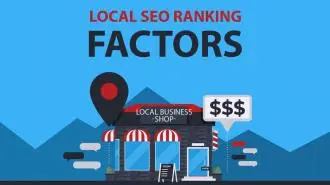Summary
The local SEO checklist outlines a comprehensive strategy to improve local search rankings in 2026. Key components include setting up and optimising a Google Business Profile by selecting an accurate category, adding contact details, business descriptions, and verifying the listing. It stresses the importance of website optimisation with local keywords, publishing high-quality and location-specific content, and managing citations consistently across directories. The guide also covers technical SEO audits, mobile-friendliness, structured data via schema markup, and building links with local relevance. It highlights maintaining an online reputation through review management and social media engagement, tracking performance using tools like Google Analytics, and training staff to align with the brand and SEO goals. Local advertising beyond digital channels is also encouraged to reach a wider audience effectively.
The need for local SEO has really taken off lately. More and more people are seeing the importance of having a solid local SEO checklist for 2026.
While there are differences between local SEO and general SEO, the best practices, including publishing relevant content and building a social media presence, remain the same. So, why should you invest resources in developing local SEO architecture?
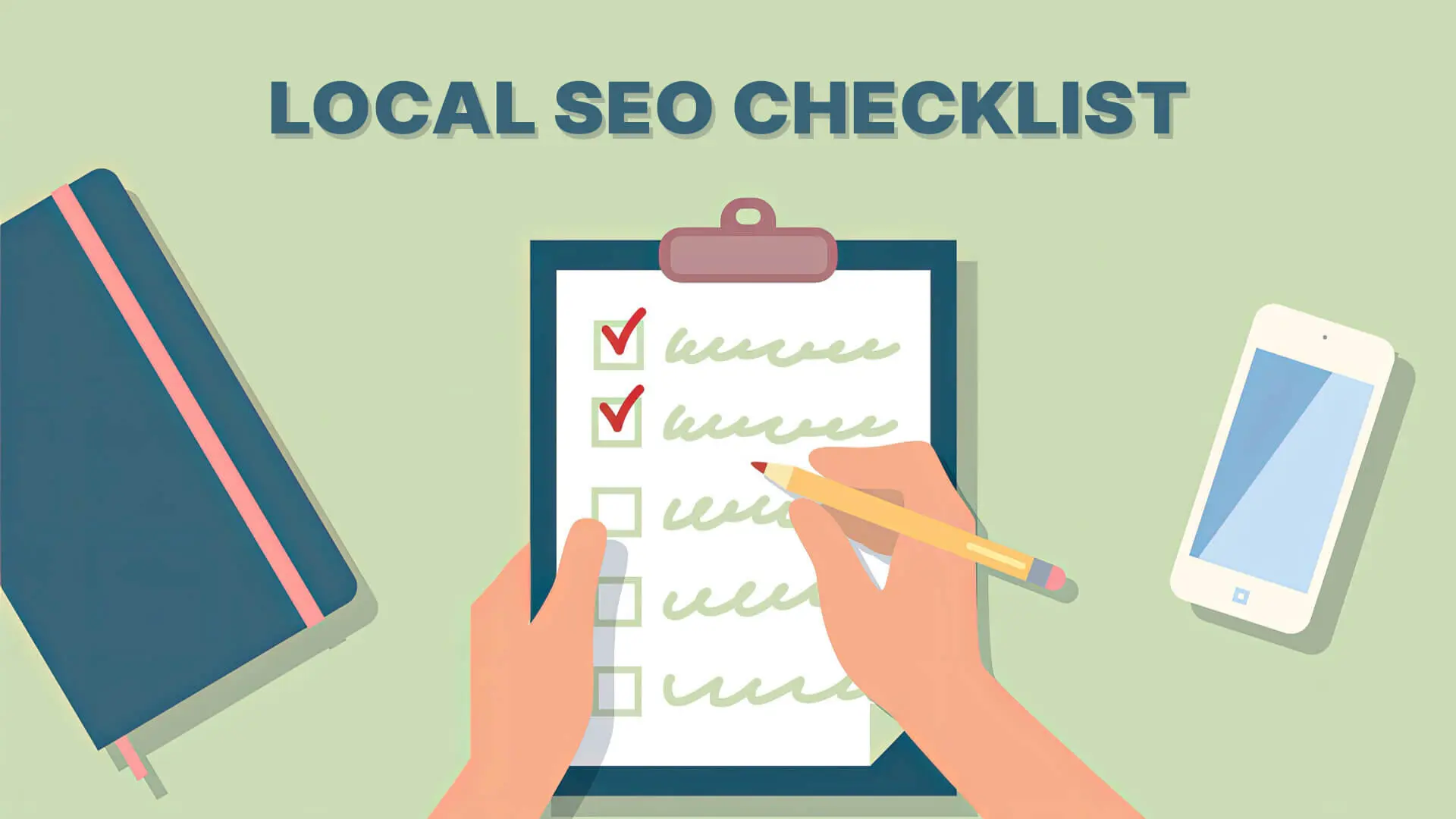
Even though there are many similarities, local SEO is especially effective for connecting with consumers through business marketing and website optimisation. Techniques like hyper-local optimisation can draw in substantial traffic, catching customers’ eyes just when they’re ready to make a purchase.
To maximise the effectiveness of this strategy, you should create a local SEO checklist and address the points mentioned here. As Google looks to upgrade, take advantage of search engine results search engine results with new products, services and content. This is your chance to rank higher for local search results through innovative techniques.
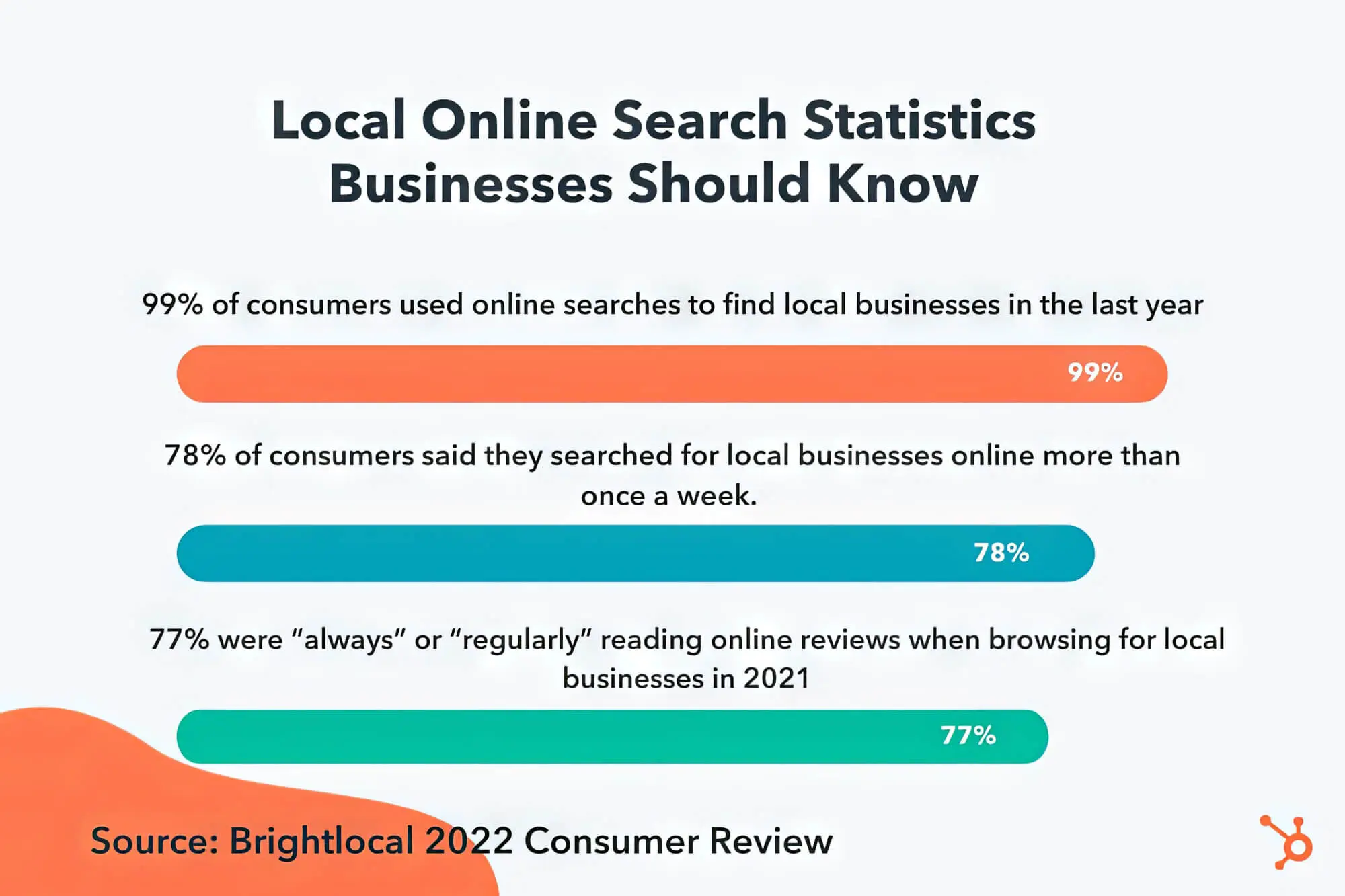
2026 Local SEO Checklist
Developing a local SEO strategy that focuses on local keywords for your business profile can be tricky. It’s crucial to tackle it methodically. We recommend putting together a local SEO checklist to fine-tune your SEO structure and bring in local customers.
Want to receive updates? Sign up to our newsletter
Each time a new blog is posted, you’ll receive a notification, it’s really that simple.
For the benefit of a local business, we have categorised our SEO checklist into five steps:
- Creating a Google business profile
- SEO optimisation for local businesses
- Building and maintaining an online image
- Tracking the local SEO performance
- Training the staff about the business and its products or services
Take a look at this optimise your local SEO checklist infographic for more information:

1. Google Business Profile
We have added a Google Business profile to the top of our local SEO checklist. This is because setting up a Google “My Business” profile is an effective strategy for ranking on top of the local search results to attract more consumers.
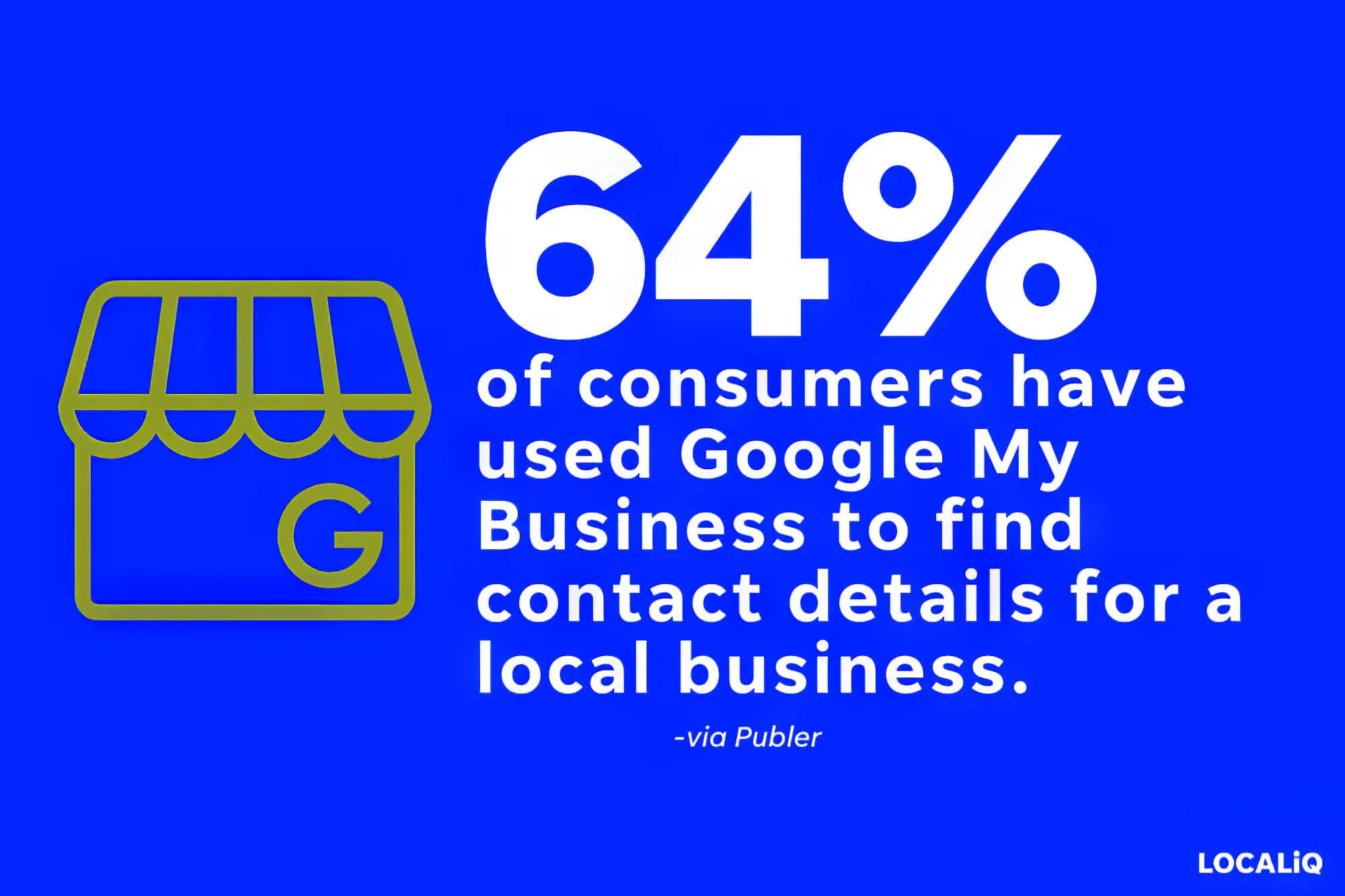
Your business profile will get more views and interactions on Google Maps and Search as it becomes easier for people to quickly find relevant info about your company. You can create an effective business listing by including details like business info, reviews, and photos in local searches.
But to create a top-notch business profile and an effective business website and rank high on search engines, choosing the correct business category is essential. In SEO, categorising local businesses as a critical ranking factor is similar to using relevant keywords so the site shows up higher on local search results.
Based on available data, there were nearly 4,000 categories in 2020 for a business to improve its local search ranking with the use of target keywords. But rather than opting for a mundane sort, we suggest you take a different approach.
Pick a category that will be relevant for classifying your local business while also providing a popular search item. For example, if you are in the summer house painting business, use “house painting” or “summer painting” for online directories.
But we aren’t going to leave you high and dry by just talking about the benefits of a Google listing. Here we have explained the steps you should follow to set up a Google Business profile based on multiple ranking factors:
A. Google Maps
Your first move should be getting your business on Google Maps. Just use the menu bar at the top left of the page to do this.
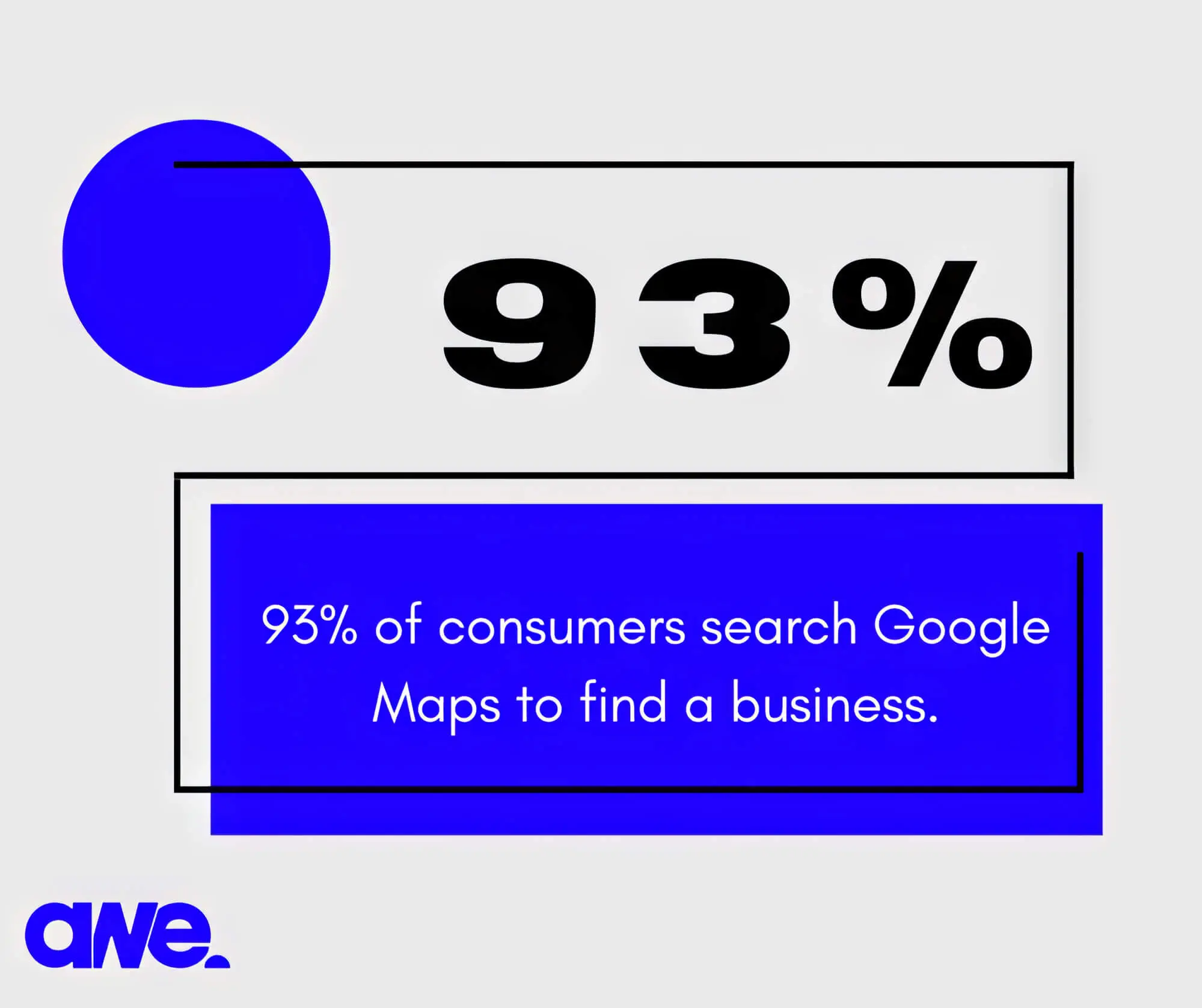
B. Business Account
Choose the create account option and click “To manage my business” from the drop-down menu. Enter your details, hit “Next,” and then Google will verify your phone number and a few other things.
Proceed to hit the “agree” button on the terms and conditions page to get started on the profile.
C. Category And Business Name
This is the most critical part of the search engine optimisation process because you will have to choose a unique business name that’s easy to remember but also unique. As you start typing probable names, Google displays similar businesses in its database, so remember to choose the exact business name without resorting to keyword stuffing.
We recommend adding keywords in the business description and deciding on a relevant category to be readily visible on local search results.
D. Location
For business addresses, selecting the area of operation is easy, thanks to Google’s suggestions, and all you need is to select “yes” or “no” for an area. When your business has a physical outlet, adding an accurate location will allow consumers to search for the store. But if you strictly operate online, skip this step and choose the area you serve from the drop-down menu.
E. Contact Information
Verify the contact information and the website URL, ensuring consumers can contact your business without hassle.
F. Opt For Updates
Some businesses need to follow the SEO best practices and pay more attention to this best practises and pay more attention to this option to maximise the use of easy techniques to improve their local SEO strategy. By opting for updates, Google directly provides suggestions about the best practices for your business to attract the local community.
G. Verification
The last step is verifying the business profile to ensure it becomes searchable, so choose one of the following five methods:
- Phone verification through automated call or code sent via text
- Email verification containing a code
- Postcard verification, whereby you will receive a postcard with a code
- Video verification to determine location and proof of equipment
- Video call to clarify all the facts in front of a representative
Once the verification is complete, you can add further information about your business on Google; you can add further information on Google to improve the business’s credibility. These can include -
- Specific services that help you stand out
- Information about hours and days of operation
- Receiving messages from consumers
- Describing the business in 750 characters
- Photos
- Videos
- Reviews
- Google Ads
Pro tip: When writing the business description, discuss the brand history, the product’s unique selling point, and its standout features. Even more important is avoiding irrelevant links, offensive content, sale announcements, or HTML codes is even more critical. We suggest running the business description through spell-checking software since Google suspends accounts with misspellings in the product or brand name.
Once all the information is updated and uploaded, clients searching for your product or service in local directories or local sites online will benefit from the authentic information. This will help them decide whether local businesses are worth investing in while answering common questions consumers might have.
Long story short, a Google My Business profile should consist of the following points:
- A great way to start is to create a webpage
- Verify the Google business profile
- Choose a relevant category for your business that will attract new customers to the business
- Optimise the site by adding photos, videos and additional info
2. Optimising The Website
Once the Google business profile is live, the next thing you should do to improve local SEO ranking factors is to optimise your website. But didn’t you already optimise the site when creating a business profile, so why do it again, and how is it different?
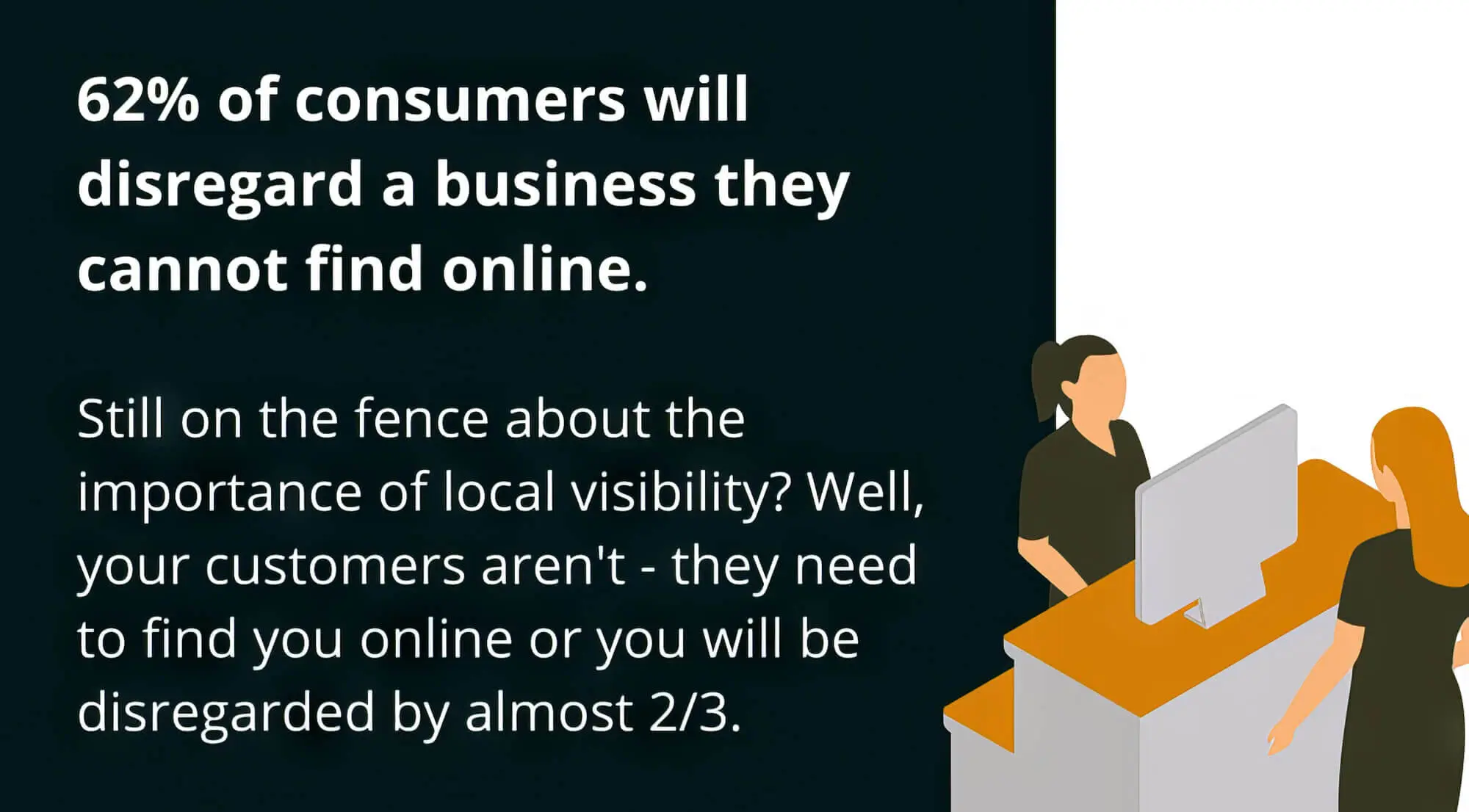
With the Google My Business profile, you had set the optimisation process in motion, and now it’s essential to take it further to improve the local SEO strategy. Most of the steps involved in this process are similar to the basic techniques for improving SEO, such as
- Optimising the pages by targeting local keywords local keywords
- Writing high-quality content to attract local customers
- Local link building among relevant pages
While we aren’t recommending keyword stuffing, it’s still essential to…
- Rank for organic results
- Having a clear review process in place
- Business profile should have local keywords relating to geography and category
i) Optimising The Content
A. Publishing Latest Info
We’ll dive into internal links for local searches later, but for now, remember it’s vital to keep your content updated with relevant info. Breaking details into bullet points can help customers find what they’re after more easily.
On that note, optimise the title tags and use local target keywords for the meta descriptions. It would help if you also asked the content management team to consider semantic variations of common keywords to optimise the blog and static content with target keywords.
For example, when using location keywords such as ‘New York’ for a real estate company, you should include blog posts about what people can do in nearby areas. But most importantly, it’s crucial to publish only high-quality and original content with your address and phone number to achieve higher search rankings.
At this point, it would be a good idea to clean duplicate content using free tools to enhance your local SEO efforts further.
B. Location-Specific Information
You must create content that is location specific by using the business to sponsor local events, which you further write about on the web pages. We even recommend considering creating a blog post that features local news with local information about the season, demographics and location.
While having a handy local SEO checklist is important, you can take it a step further by creating a content calendar. This will help you manage the content better and promote posts to rank higher for seasonal content.
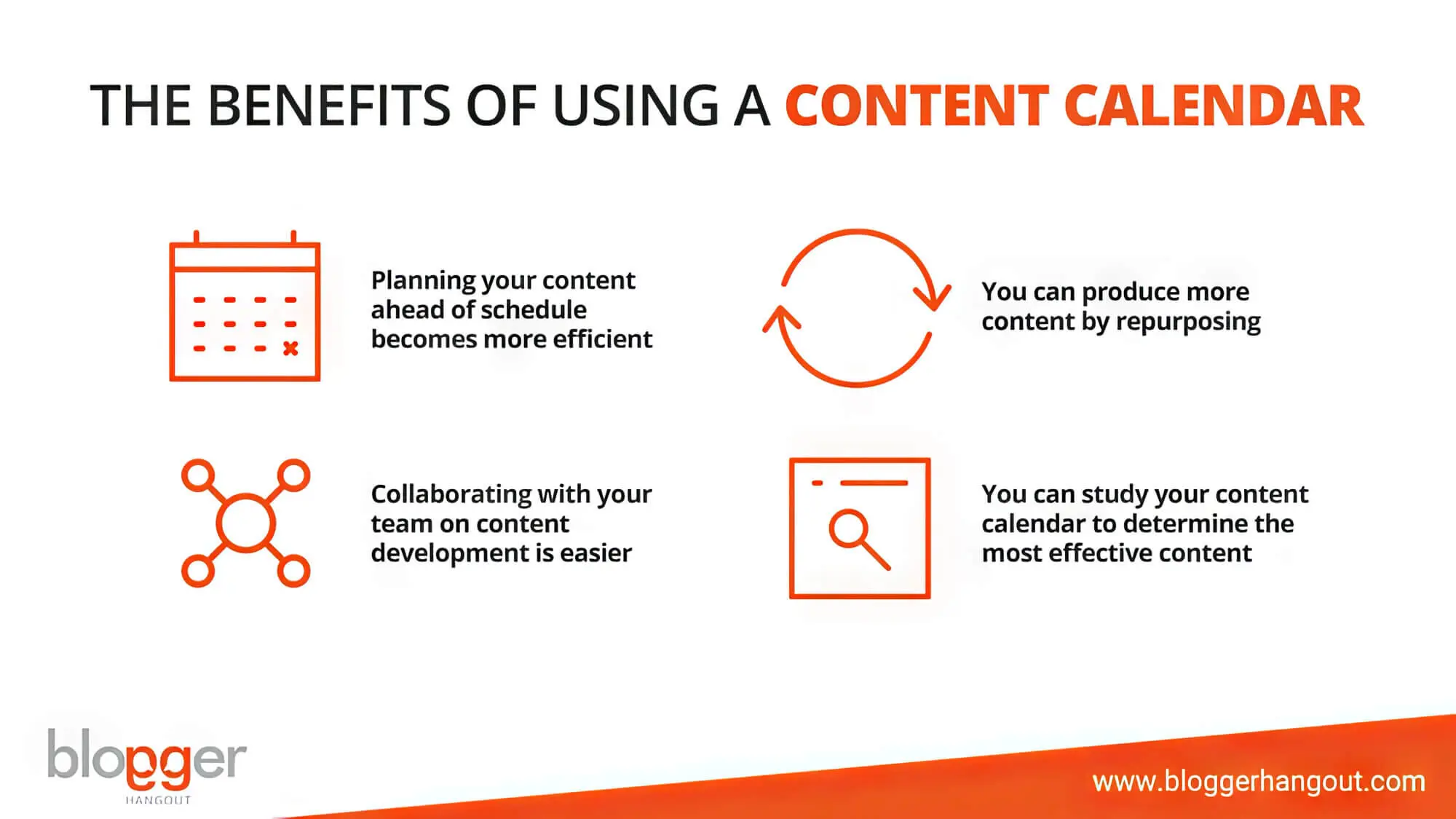
ii) Local Citations
Once you create content that holds value for local searches, focus on citation management since consistent citations help Google determine your business’s trustworthiness. Search engines, like Google, will rank your web pages higher when it comes across consistent citations for personal information, such as the business address, name, phone number, etc.
That’s why we suggest updating local directories with the necessary information and automating the citation process to save much-needed time. The first thing you must do is ensure the business information is visible on the homepage for the convenience of visitors.
Double-check the information before publishing it because conflicting points about a business will impact SEO and result in lower local rankings.
iii) Technical SEO Audit
After the business page is live and you have optimised the local landing pages based on the target audience’s needs, don’t relax. Your job has only begun because you need to note the impact of making your site mobile-friendly and the technical challenges of running the site by conducting a local SEO audit.
Performing an audit will help fix the technical issues and make it easier for Google or other search engines to find the website. All you need is a tool like Site Audit to flag the most common errors, notices and warnings. Additionally, such tools even provide tips on how to manage the crisis.
Sometimes, you won’t have to do anything significant, as adding local links, managing broken pages and rewriting the meta descriptions or title tags will improve the SEO architecture. You also need to optimise the site on a mobile device and ensure the mobile version of the web page is visible to local consumers.
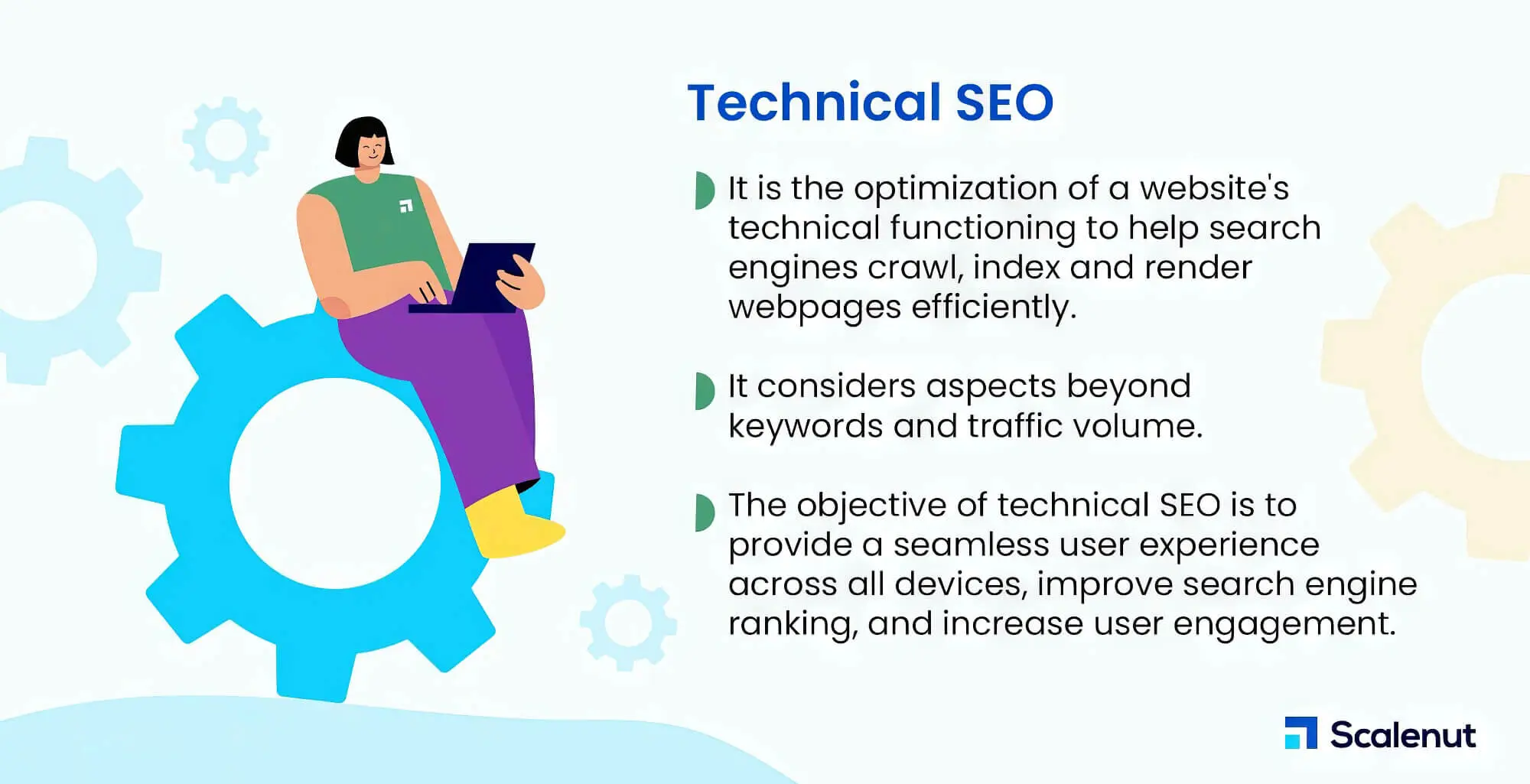
iv) Build Links
You have already taken care of three key ranking factors -
- Creating a local business profile
- Citation management
- Addressing technical issues
But to improve local ranking further, an effective strategy would be building local links. The basic purpose of link building is establishing connections, so ask yourself how to connect with the local community while hoping other websites link back to your page.
To do this, you must conduct keyword research and write content that other web pages in your niche will find relevant. Having worked closely with local businesses, we have seen how links to similar businesses, local blogs and other websites help boost the SEO architecture.
You can even find prospects to contact through free link-building tools and strategies.
v) Schema Markup For Local SEO
To create the ultimate local SEO checklist, it’s necessary to pay attention to the importance of schema markups to make local businesses stand out. Those who take time to focus on this strategy find their website ranking higher while also showing in answer boxes or carousels.
Popular schema markups that can help your website leave a mark on consumers include:
- Local events
- Real estate agent
- Organisation
- Store
- HVAC business
- Electrician
- Plumber
- Historical building or landmark
- Positive reviews
Using these markups will help search engines better understand the relevance and value of your site. Some site audits even have a markup report that will allow you to see how reliant your website’s reliance on different markups.
Specific markups may sometimes become invalid, which will be visible in such reports. To sum up, you need to focus on the following factors to get started with schema markups:
- Use listing management to manage citations
- Perform site audits and ensure the webpage is mobile-friendly
- Use backlinks that are relevant to the local area or audience
- Use structured data markup and track its performance
3. Building An Online Reputation
Building an online reputation is vital for retaining existing customers while bringing in new consumers searching for services similar to yours. A couple of ways to create more brand value are:
- Using social media sites to engage customers
- getting positive online reviews on various platforms, such as Google
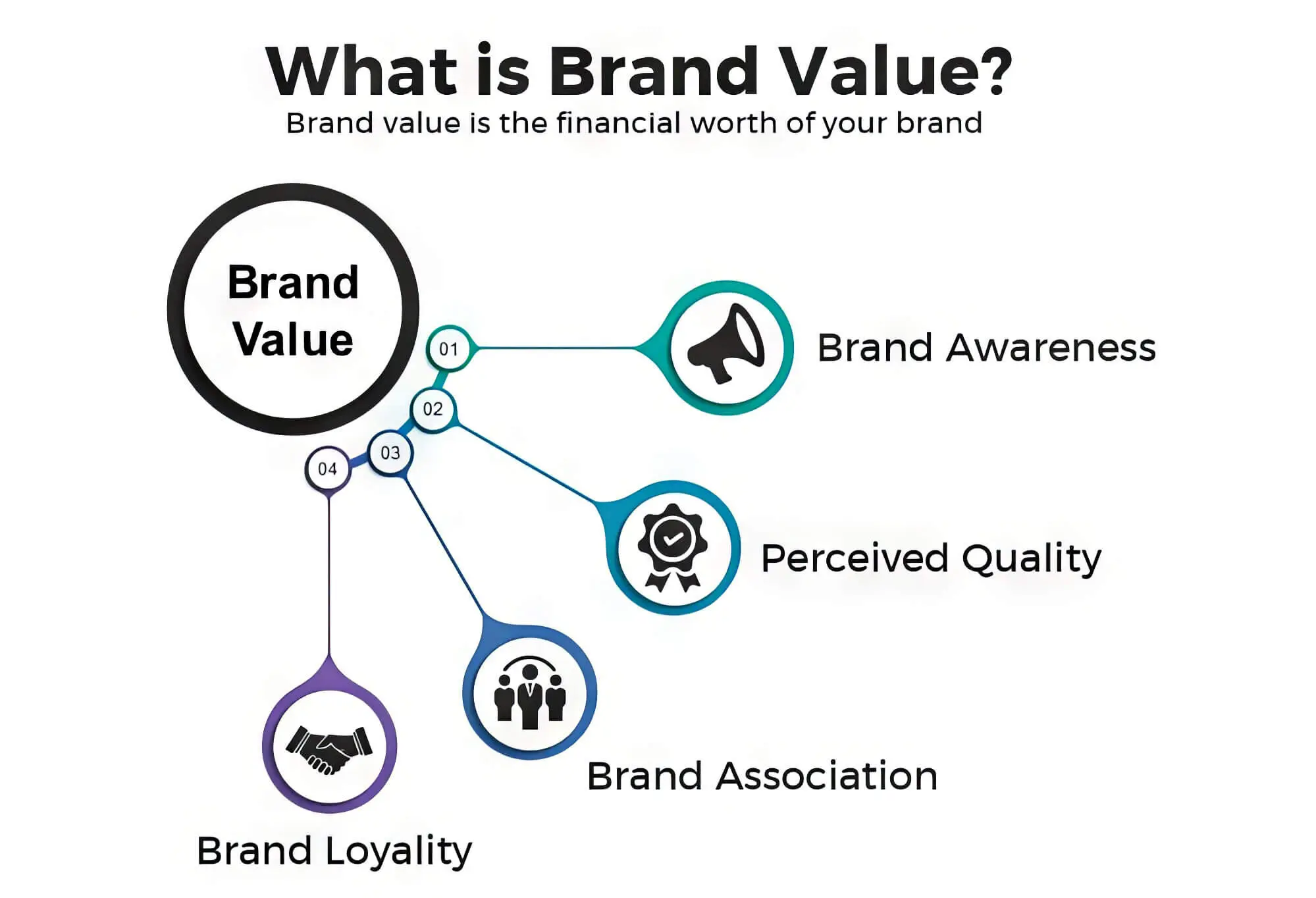
A. Review Management
To create credibility for the brand, request potential customers to leave honest feedback on the customer testimonials page. The best part is that Google has a marketing kit complete with free posters and stickers that will help you encourage more people to leave customer reviews.
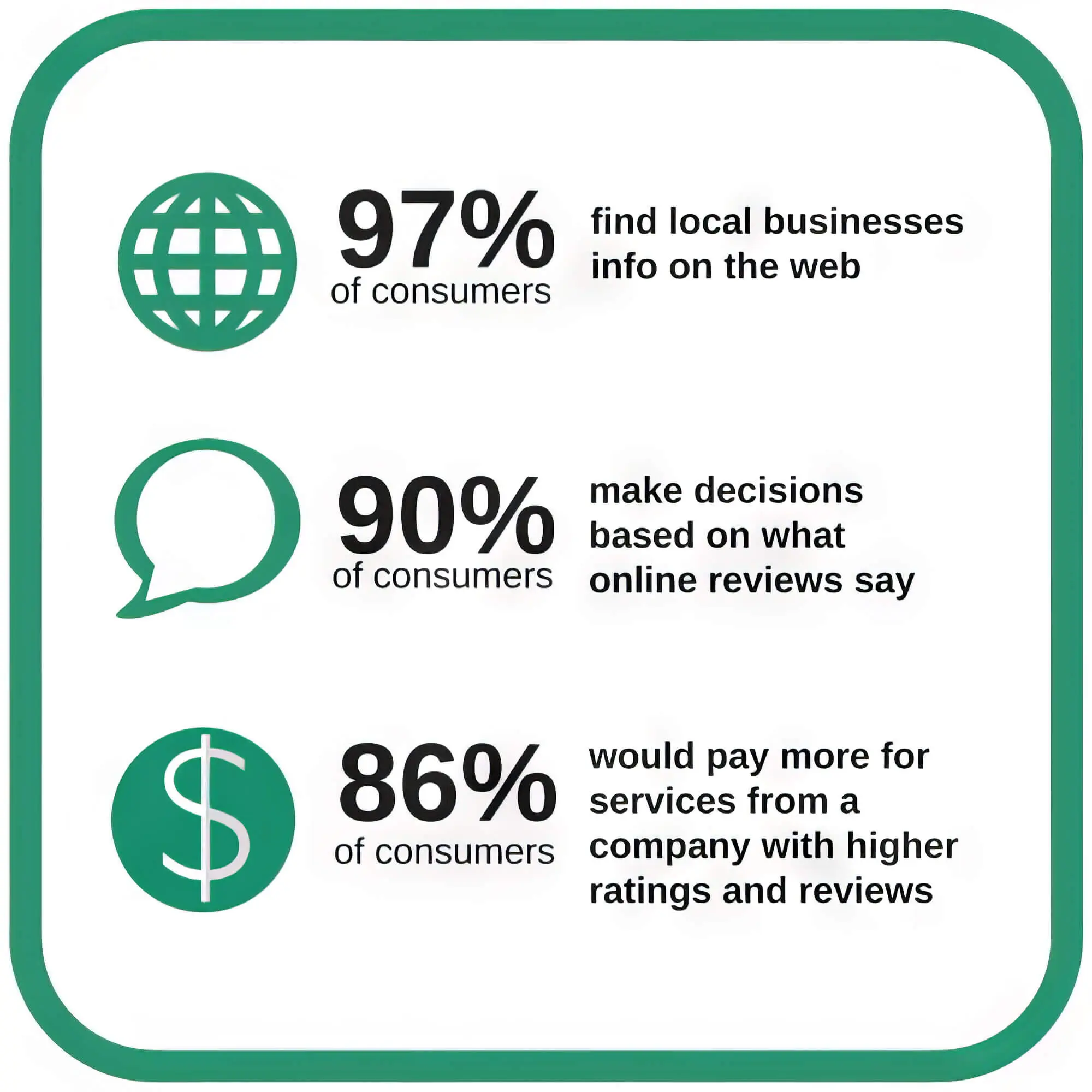
But don’t just ask consumers to review and publish them on the web page because taking the time and effort to respond to reviews is equally important. You need to ensure consumers feel heard and develop a bond with the brand, so appreciate their positive experiences while apologising for negative feedback.
Have a separate team review the testimonials and keep updating them so new users have all the information at their disposal.
B. Social Media Engagement
Social media has made it much easier to connect with the local market and engage potential customers. When your team promptly responds to queries, it boosts your company’s image, spreading goodwill through word of mouth.
However, you must manage the brand on multiple channels for wider reach, so ask the SEO team to use content management tools. Choosing what content to post and planning ahead can help you compete with rival brands.
Here we have listed some popular techniques to improve local listings:
- Post polls and questions on social media to welcome suggestions
- Share deals for happy hours
- Post videos and photos of your service, staff and the team
- Create a social media following and track the latest trends
- Post appealing content to grab attention
- Directly ask consumers to leave a review — good or bad
- Always reply to reviews and never leave consumers waiting
- Use scheduling tools for greater social media engagement
4. Tracking
There’s no use implementing local SEO efforts, be it on-page local SEO or inbound links, and not tracking their outcomes because you will be stuck in the same place. To improve the site and make it consumer-friendly, it’s essential to track your progress through tools like Google Analytics to know how visible the business is on search engines.
The content and SEO marketing team will help you develop a tracking system and note how to target keywords to perform in your local area. They can use configuration tools and position tracking software based on which you will get options relating to country, city, state or postcode for targeting specific keywords.
Tracking multiple locations and devices as part of the same project is also possible, provided the business account is updated. With a tracking campaign, you can easily monitor changes in your site’s position or those of your competitors since the content is updated every day.
You can use the tracking filter and keyword rich search engine results page features search engine results page features to find particular keywords by knowing how competitors perform. Here are some features you should know about:
- Hotel packs
- Local pack
- Featured snippets
- Images
5. Training
With suitable tracking tools, you will have all the vital information, such as reports and visuals, at your fingertips to single out growth areas. This will help you improve the business and update the local SEO strategy, but you will need trained professionals.
Many people focus on the digital upgrades they need to make to their site, but specific physical changes, such as hiring qualified personnel, will also make a difference. We have seen experienced SEO management teams help:
- Develop position tracking
- Use the latest features to rank the site higher
- Track devices and website performance in target areas
- Improve position in Google Maps
Most importantly, training the staff and keeping them updated about changes to the brand will help offer top-notch customer service. Help them know about the intricacies of the business’s products and services to answer consumers’ queries.
It would be best if you also took an active interest in the staff and their well-being. We suggest interacting with the various teams to nip problems in the bud and prevent major issues from hampering the site’s performance.
Having a backup plan and recognising achievements during team meetings is crucial to boost staff morale. If specific problems need to be addressed, don’t be overly critical but explain the situation to everyone present to find a quick solution.
Start Writing Your Local SEO Checklist
The local SEO checklist goes beyond the internet; you should create a separate advertising budget to expand the business. Local advertising on TV, flyers, radio and newspapers combined with online SEO efforts will allow search engines to find your website more readily.
To give you an idea — over a billion people use Google Maps monthly, and over 5 million apps use core products from the same platform. So, having an online presence is critical to make the business stand out.
Related Local SEO Guides
Looking to dive deeper into local SEO? Check out these related articles:
- Local SEO Ranking Factors - Understand what Google considers for local search rankings
- Guide to Citations for Local SEO - Complete guide to building and managing local citations
- Google My Business Basics - Optimize your GMB profile for maximum visibility
- Local SEO for Service-Based Businesses - Strategies for plumbers, electricians, and other service providers
If you are unsure about implementing local SEO or digital marketing tactics, get in touch with our team at sitecentre®. We can help you rank in the local search engines with our customised local and hyper-local SEO strategies, built to make you succeed!



